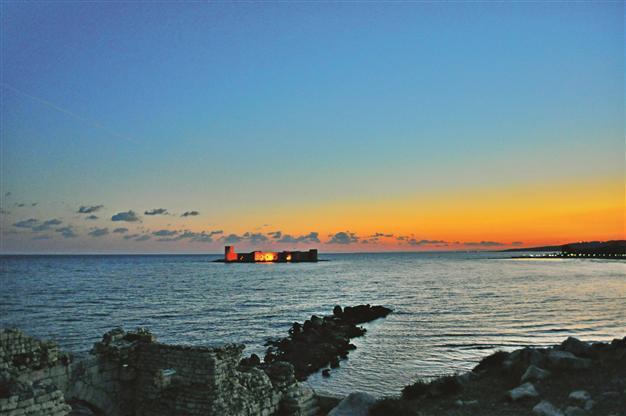 Mersin, which hosts the 17th Mediterranean Games, is not an ancient city. The excavations and studies made in Mersin show that although there are some signs indicating that Mersin is an area of settlement since Neolithic and Chalcolithic periods, the foundation of the city does not date back to long ago.
Mersin, which hosts the 17th Mediterranean Games, is not an ancient city. The excavations and studies made in Mersin show that although there are some signs indicating that Mersin is an area of settlement since Neolithic and Chalcolithic periods, the foundation of the city does not date back to long ago. Mersin’s Tarsus district is definitely worth seeing. The excavations
made in 1934 in the district’s Gözlükule tumulus showed that the first
settlements in Tarsus began during Neolithic age and continued until the
Middle Bronze Age without an interval. Historic records indicate that
Assyrian king Sardanapalus founded Tarsus.
The ancient name of
Tarsus is “Tarsa”, which was found in the Hittite texts. According to
Asyrrians, Tarsus was the capital of Que Kingdom. In 8th and 7th
centuries B.C., Asyrrians named Tarsus as Tarzi (Tarzu). During 6th and
5th centuries B.C., its name did not change during the reign of Asyrrian
and Syennesis Kingdoms. Also, the name of Tarsus is found in the coins
made by Persians. According to an Arabic history called “Miratüliber”,
Tarsus was founded by Noah’s grandson Tarasis. Tarsus was firstly called
Tarsos, which is a Greek derivative, then changed into Tarsus, which is
the Latin version of it. Tarsus has a particular importance for
Christians since Saint Paulus, one of the founders of Christianity, was
born there.
The ancient city of Soli Pompeiopolis, which is located 11 kilometers southwest of Mersin, is one of the must-see destinations. Hosting a variety of civilizations such as pirate colonies, Alexander the Great, Slevki Empire and Ottoman Empire; Soli Pompeiopolis is a large archeological site situated in the city center.
With the permission of Roman Emperor Julius Caesar, Commander Pompey launched a major expedition against pirates. In his expedition to Mersin’s shores, Pompey destroyed the pirate shelters. However, he showed tolerance to the apologizing pirates and declared Soli as the “city of pardoned pirates.” Since then, the city is known as Pompeiopolis. So far, only 40 of the giant pillars, which were estimated to be 200 originally, could be found.
Soli, which is surrounded by large residential areas now, became a busy port during Byzantine times. However, after an earthquake known as “Grand Antakya Earthquake” in 528, which is predicted to be very violent, the city was destroyed to a great extent.
Another important tourist attraction in Mersin is the Saint Paul’s Well located in the eastern district of Tarsus. St. Paul (Paulus), which is among the places where Christianity began to spread first, has a crucial place in the history of Christianity. St. Paul was born in Tarsus as a Jew (Otto Menardius).
He went to Jerusalem for his education at a very young age and was involved in the attacks against the Christianity, which began to spread at that time. St. Paul finally converted to Christianity after he saw Jesus Christ in a journey he made to Damascus. Devoting himself to spread the Christianity, St. Paul took to the roads with this aim. His long journeys became the longest and most influential ones made on behalf of Christianity during the first century A.D. In these journeys, Paul formed the first Christian communities. The well, which is located in a yard recognized as the location of St. Paul’s house, is known as St. Paul’s Well. The importance of St. Paul in Christianity and the remains of the house and the well that are regarded as sacred for a very long time are interpreted as the traces of the Christian community living in Tarsus.
Kızkalesi (maiden’s castle), which hosts increasingly more visitors with its fine sanded beach and blue sea, is located 70 kilometers west of Mersin. The castle was built on a rocky ground in the middle of the sea.
There are different legends about the construction of this castle, which was reinforced with eight towers.
Some sources say the castle was built for military reasons. Piracy, which was very effective in Mediterranean shores and sometimes even caused the migration of locals, also threatened the coastal town of Korykos along with the whole region.
Renowned statesman and lawyer Cicero, who was assigned to the region as a governor in 51 B.C., fought with pirates and achieved considerable military successes. In his fight against pirates, Cicero formed a defense system by using the two castles on land and sea.
In case of an attack, chains were hung between the two castles and the enemy boats’ entrance into the port was prevented.